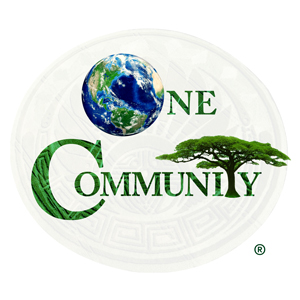Education for Life: The Subject of Social Sciences

The Subjects of Social Sciences – Click to Enlarge
This page is a free-shared non-linear educational subject outline for Social Sciences. It is purposed for use in community education environments, homeschool environments, traditional schooling environments, or as a supplemental and fun addition to any education program. As part of the complete Education for Life Program, this subject outline is specifically designed to work in conjunction with the other components: Foundations of Teaching, Curriculum, Lesson Plans for Life, Teaching Strategies, Learning Tools and Toys, Evaluation Model, and The Ultimate Classroom. If you’d like to learn how all these components work together, click here.
THESE LINKS JUMP DIRECTLY TO EACH COLOR ON THIS PAGE
RED | ORANGE | YELLOW | GREEN | BLUE | INDIGO | VIOLET
CLICK HERE FOR THE “OTHER RESOURCES” SECTION
NOTE: The colors are provided as a possible linear progression (red/easiest to violet/most challenging) for people that might prefer a more linear structure. Our core philosophy is that through creativity every color can be made easy or challenging for any learning level.
RELATED PAGES
EDUCATION OVERVIEW | HOW TO USE THIS COMPONENT | OUR OPEN SOURCE PURPOSE

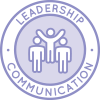
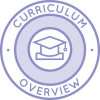
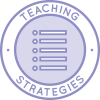
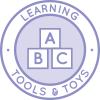
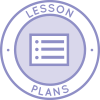
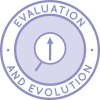
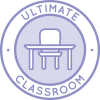


WAYS TO CONTRIBUTE TO EVOLVING THIS EDUCATION PROGRAM WITH US
SUGGESTIONS | CONSULTING | MEMBERSHIP | OTHER OPTIONS
RED
| NOTE: The colors are provided as a possible linear progression (red/easiest to violet/most challenging) for people that might prefer a more linear structure. Our core philosophy is that through creativity every color can be made easy or challenging for any learning level. |
 | - What are social skills and why are they important
- Who are your friends?
- Why do we make friends?
- How to be a good friend?
- How to become an even better friend?
- What to do with your moods and emotions?
|
 | - What is a family?
- My family, my tribe, my community, my society
- Family lineage, family creed, family traditions
|
 | |
 | - Seasons, weather, and climate of your home area
- The nature, plants, animals, land, and soil of your area
- The geography and relief of your home community
- The history of geographical changes of the area where you live
|
 | - Fine arts: Music, Dance, Painting, Drawing, Sculpting, Theatre and Performance Art, Architecture, Cinema, Broadcasting
|
 | - Who am I? Self Identity
- How do I feel? My emotions
- How do I think? My senses, my perceptions
- My desires, goals, and achievements
|
 | - The culture of the USA
- Folklore
|
 | - The history of your town / city / community
- The origin, culture, traditions of your town / city / community
|
ORANGE
| NOTE: The colors are provided as a possible linear progression (red/easiest to violet/most challenging) for people that might prefer a more linear structure. Our core philosophy is that through creativity every color can be made easy or challenging for any learning level. |
 | |
 | - The history of anthropology
- The origins of human being
- The theory of evolution
|
 | - Family relationships
- Family roles and responsibilities (past, present, future)
- Strategies of communication, listening, and leadership with individuals and in groups
|
 | - Religion
- National holidays
|
 | - What education means to you
- How education differs in different cultures
- How education has changed over time
- What can be expected for the future in education
|
 | - The relief of your country
- The geographical location and borders of your country
|
 | - The climate of your country
- The nature, animals and plants of your country
- The minerals, the ground, and soil of your country
- The conservation of natural resources of your country
|
 | - The tectonic pattern of your country
- The geological pattern of your country
- The geomorphological structure of your country
- The paleogeographic conditions of the territory of your country
|
 | |
 | - How to cope with stress
- Stress, its function
|
 | - Emotions, states, and moods
- Emotions and their functions
|
 | |
 | - The history of your country
- When and how did it start?
|
 | - Your nation, nationality
- The population of your home country
- The industries and agro-industrial complex of your home country
|
 | - The connection between motivation, needs and emotions
|
 | - Historical types of states
- Forms of statehood
- legal state
|
YELLOW
| NOTE: The colors are provided as a possible linear progression (red/easiest to violet/most challenging) for people that might prefer a more linear structure. Our core philosophy is that through creativity every color can be made easy or challenging for any learning level. |
 | - Strategies for management of and in groups
- Strategies for supporting others individually and in groups
- Strategies for energizing and encouraging others and groups
|
 | - Types of families: conjugal (nuclear family), consanguineal (extended family), matrilocal, cohabitation, civil unions, same-sex relationships, etc.
- What makes people a family? (consanguinity ‘blood’, affinity, co-residence, etc.)
- “Rules” in personal relationships
- Exploration of different individual and cultural ideas that define families and their roles
|
 | - What is history?
- What is the history of history?
- Why is it important to study history?
- Why is history important to you?
- What does history mean to you?
|
 | - Attention
- The ability to focus
|
 | - Rules on the street
- Rules in different parts of the world
|
 | - Art as means of personality creation
|
 | - How do we remember, keep memories and forget? Why?
|
 | - Subculture and its functions
|
 | |
 | |
 | - Evolution and typology of societies
- Individuals in the context of socioeconomic development of the society
|
 | - What makes culture?
- The functions of culture
|
 | |
 | - The transportation of your country
|
 | |
 | - The sense of responsibility
|
 | - The administrative and territorial division of your country
|
 | - The economic status and political situation of your country
|
 | |
 | |
GREEN
| NOTE: The colors are provided as a possible linear progression (red/easiest to violet/most challenging) for people that might prefer a more linear structure. Our core philosophy is that through creativity every color can be made easy or challenging for any learning level. |
 | - Law
- The system of law: norms, institutes, and branches
|
 | |
 | - Social norms and their types
|
 | |
 | |
 | |
 | - Cultures
- World culture
- World outlook and historical thinking
|
 | - Conflict Resolution
- Exploring and respecting points of view and the opinions of others
- Strategies for offering and asking for help individually and in groups
- Strategies for agreement and disagreement individually and in groups
|
 | - The artistic culture of Western Asia
|
 | |
 | |
 | - Ancient Greek architecture and arts
- Prehistoric Greece and classical Hellas
|
 | - The origin of Roman genius
- Roman culture: liturgy and carnival
|
 | - Periods of history
- Significant events prehistory to 500 C.E.
- Significant events 500-1500 C.E.
- Significant events 1500-1900 C.E.
- Significant events Post-1900 C.E.
|
 | - The perception of the world by primitive people, how this perception has changed, how is it still the same, what changes can be expected in the future?
|
 | |
 | |
 | - Religions and philosophies
- Historical processes
|
 | - Myth
- Mythological consciousness
- Sayings, proverbs, riddles
|
 | - Lithosphere
- The shape and motion of the Earth
|
 | - Stages and periods in culture development
|
 | - Analysis: deduction and induction
|
 | - The culture of Ancient Egypt
|
 | - Imagination
- Creative thinking
|
 | - Main characteristics, functions and sources of law
|
 | - The culture of ancient civilizations
- Antique culture
|
 | |
 | - Family related law and legalities (marriage, custody, property, power of attorney, etc.)
|
BLUE
| NOTE: The colors are provided as a possible linear progression (red/easiest to violet/most challenging) for people that might prefer a more linear structure. Our core philosophy is that through creativity every color can be made easy or challenging for any learning level. |
 | - The constitution of the USA
- Constitution law
- Constitutions of the world
|
 | - The architecture and arts in Byzantium in V-VIII centuries
|
 | - The crisis of humanistic ideals
|
 | - Baroque culture in Europe
- Italian baroque school
|
 | - Geographic overview of Europe
|
 | - Humanism. A new model of the world and personality
|
 | - The right to vote in political elections
- The history of voting
- Voting in different cultures and countries
- What does voting mean to you?
|
 | - Social perception
- Family as an institution for socialization
- Group thinking versus thinking for yourself
- Attitude as an aspect of contribution in all situations
- Setting and clarifying boundaries to assure win-win relationships
|
 | - Contribution- What is contribution and why contribute?
- Volunteering and active or conscious vs passive or unconscious contribution
- Contribution in relation to your family, community, society, and own goals
|
 | - Geographic overview of the world
- The world’s Land masses
- The world’s oceans
|
 | - Two Way CommunicationTeaching/ learning opportunities across all age groups
- Strategies for asking for and offering help
|
 | - The right to organize political parties and public associations
- The right to freedom of belief, world outlook, and convictions
|
 | - Geographic overview of South America
|
 | |
 | - Geographic overview of the Arctic and the Antarctic
|
 | - Engaging family in your personal growth process
- Contribution within a family and outside
|
 | - Significant historical events of Europe
- Significant historical events of Southwest Asia
- Significant historical events of Africa
|
 | |
 | - Geographic overview of Australia
|
 | - Gothic style and scholasticism
|
 | |
 | - Personality: individual and collective
- Character and temperament
|
 | - Geographic overview of Asia
|
 | |
 | |
 | |
 | - Geographic overview of Africa
|
 | - Family as an economics unit (family economics)
|
 | |
 | - Geographic overview of North America
|
 | - Geographic Significant historical events of East Asia
- Significant historical events of South and Southeast Asia
- Significant historical events of the Americas (excluding the US)
|
 | - Legal status of a person and citizen
|
INDIGO
| NOTE: The colors are provided as a possible linear progression (red/easiest to violet/most challenging) for people that might prefer a more linear structure. Our core philosophy is that through creativity every color can be made easy or challenging for any learning level. |
 | - Branches of government: the legislative, the executive, and the juridical
- Jural relationships
- Juridical responsibility
|
 | - Reasons of art nouveau beginnings
- The combination of Oriental and Western European art
- Symbolism as the aesthetic and philosophical background of art nouveau
|
 | - US and state history of resources, development, and government
|
 | - Personalities in psychology
- Methods and approaches in psychology
- Important revelations in psychology
|
 | |
 | - US Intellectual and Cultural History
- US Foreign Policy
|
 | - The industry of the world
|
 | |
 | - Flemish and Dutch arts as two poles of world outlooks
|
 | - Referendum
- Types of referendum
|
 | - The legislative branch: the houses of Congress
|
 | - Strategies for team building, forming and organizing groups
- Exploration of different roles in social environments and groups
|
 | - Philosophical pessimism and voluntarism
- Impressionism and Postimpressionism
|
 | - Exploration of current events and how they affect your family and their lives
|
 | |
 | |
 | - Economic ties and international tourism
|
 | - Exploration of different roles in social environments and groups?
- Who are you in different settings?
- Why do different social environments exist?
|
 | |
 | - The age of absolutism and Enlightenment period
|
 | - The Executive branch
- The President
- The Cabinet
- The House of Representatives
|
 | - The political map of the world
|
 | - “Golden century” in Spanish arts
|
 | - Politeness and gratitude skills
|
 | |
 | |
 | - International organizations
|
 | |
 | - Authorities
- Types of authorities
|
 | - Art nouveau
- Styles and trends in art nouveau
- New theater
|
 | |
 | - The agriculture of the world
|
 | - Local administration, state authorities
|
 | - Fairness and honor skills
- Negotiation and compromise skills
- Consensus meaning, value, and skills
|
 | - Realism in arts
- Romanticism in arts
- Historic outlook at a person
|
 | - Global issues
- The population of the world
- World nature resources
|
VIOLET
| NOTE: The colors are provided as a possible linear progression (red/easiest to violet/most challenging) for people that might prefer a more linear structure. Our core philosophy is that through creativity every color can be made easy or challenging for any learning level. |
 | - Social skills exploration for professional and formal environments
|
 | - Social skills exploration for recreational and informal environments
|
 | |
 | - Cognitive, emotional and behavioral skills exploration, acquisition, and application
|
 | - Financial law
- Administrative law
|
 | |
 | - Psychology in Middle Ages
|
 | - Engaging community in your personal growth process (idea source was Reggio)
- Community roles and responsibilities (past, present, future)
- Community defining attributes (values, beliefs, structure, government, traditions, etc.)
|
 | - Court system and law enforcement agencies
|
 | |
 | |
 | - Cultural circles as a community
|
 | - Social circles as a community
|
 | |
 | |
 | |
 | - Strategies for engaging diverse perspectives and conducting research
|
 | - Social competence and conscious personality development
|
 | - Exploration of current events and how they might be affecting other cultures and their lives
- Exploration of current events and how they affect humanity as a whole
|
 | - Exploration of current events and how they affect your culture and the lives of everyone in it
|
 | - Exploration of current events and how they affect you and contribute to your life
- Exploration of current events and how they might be affecting other families and their lives
- Exploration of current events and how they affect your community and their lives
- Exploration of current events and how they might be affecting other communities and the lives of the people within these communities
|
 | - The culture of the XXI century
- The culture of the XX century
|
 | |
 | |
 | - Behaviorism and neo-behaviorism
|
 | - New means of expression in music
|
 | - Functionalism in architecture
|
 | |
 | - Psychology in the age of Enlightenment
|
 | |
 | - Experimental psychology
- Modern psychology
- Gestalt psychology
|
 | |
 | - Contemporary issues and global perspectives
- Contemporary politics
|
 | - What other global perspectives exist and what historical perspectives distinguishes them?
|
 | |
 | - Exploring global historical perspectives from the standpoint of global cultures
|
 | - Exploring global historical perspectives from the standpoint of global communities
|
 | - Exploring global historical perspectives from the standpoint of global individuals
- Exploring global historical perspectives from the standpoint of global families
|
 | - Environmental law worldwide
- International law
|
 | - What does it mean to think globally?
|
 | - Global perspectives and history
|
 | - Exploring global historical perspectives from the standpoint of humanity as a whole
|
 | - Cognitive psychology
- Psychoanalysis and the subconscious/unconscious mind
|
OTHER RESOURCES
We're building a resource section. Click here if you have a suggestion or resource for this page.
OPEN SOURCE SUBJECT RESOURCES (click icons for complete pages)



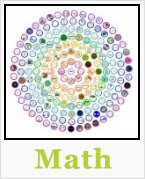



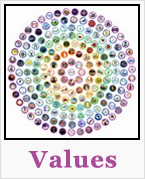
OPEN SOURCE CURRICULUM OUTLINES (click image for summaries and links to complete pages)
CARE
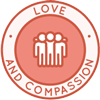
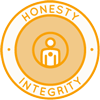

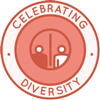
SHARE
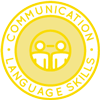


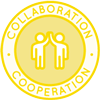
PLAY
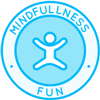
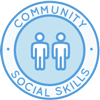
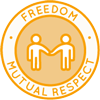
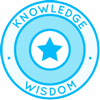
OPEN SOURCE TEACHING METHODOLOGY SUMMARIES
Montessori | Waldorf | Orff | Reggio | Multi-Intelligence | Bloom's Taxonomy | Study Tech | I-WE
INDEX OF ALL THE ONE COMMUNITY OPEN SOURCE LESSON PLANS

Click this image for the Lesson Plans for Life page with links to the rest of the lesson plans
THE WORLD'S LARGEST ONLINE FREE EDUCATION RESOURCE ARCHIVE
RELATED CONTENT AND OTHER RELATED RESOURCES
We're building this resource section. Click here if you have a suggestion or resource for this page.
OTHER RESOURCES































































































































































 One Community
One Community

















































